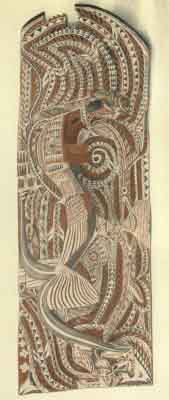
GEOGRAPHICALLY Melanesia naturally falls into two divisions: New Guinea with the smaller adjacent islands forming one, and the long series of islands lying to the north and east of it, from the Admiralty Group to New Caledonia and Fiji, constituting the other. From the anthropological point of view the population of the Melanesian area is exceedingly complex, being composed of a number of different racial types. While detailed knowledge of the area is still too fragmentary to render conclusions other than tentative, it may be said that at least three groups can be recognized. Presumably most ancient and underlying all others, though now confined to certain of the more inaccessible parts of the interior of New Guinea and possibly to some few islands of the Eastern Archipelago, are a number of Negrito or Negrito-like tribes in regard to which we thus far have only the scantiest details. The bulk of the population of the interior of New Guinea, of considerable stretches of its southern, south-western, and northern coasts, and of portions of other islands forms a second stratum known as Papuan. Mythological material from them is exceedingly scanty. The third type is that which occupies much of south-eastern New Guinea, together with part of its northern and north-western coasts, and forms the majority of the inhabitants of the islands reaching from the Admiralty Islands to Fiji. Strictly speaking, the term Melanesian should be applied to this group only; and from it and the Papuo-Melanesian mixtures the greater part of the myth material at present available has been derived.
It is quite evident that no adequate presentation of the mythology of the whole Melanesian area, using the term in its broader geographical sense, can as yet be made; the most that can be done is to present an outline of the material derived from what is clearly the latest stratum of the population and to supplement this, when possible, by such fragmentary information as we possess from the older Papuan Group. Of Negrito mythology, here, as in the case of Indonesia, absolutely nothing is known.
PLATE XII
Carved and painted board with figures of a bird and of fish. These figures refer to guardian spirits or clan totems, the boards being used for the decoration of the mask-houses, in which the sacred masks used in ceremonials are kept, and where many of the ceremonies themselves are held. New Ireland. Original in American Museum of Natural History, New York City.